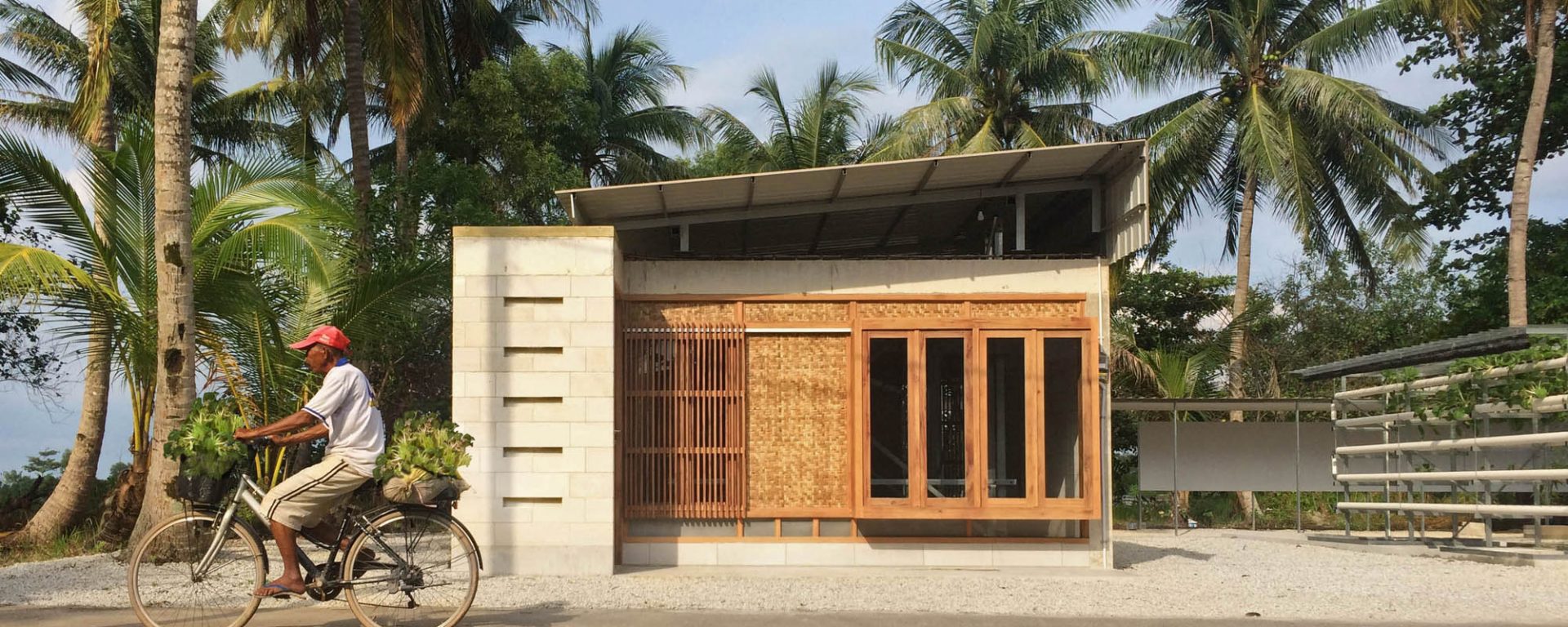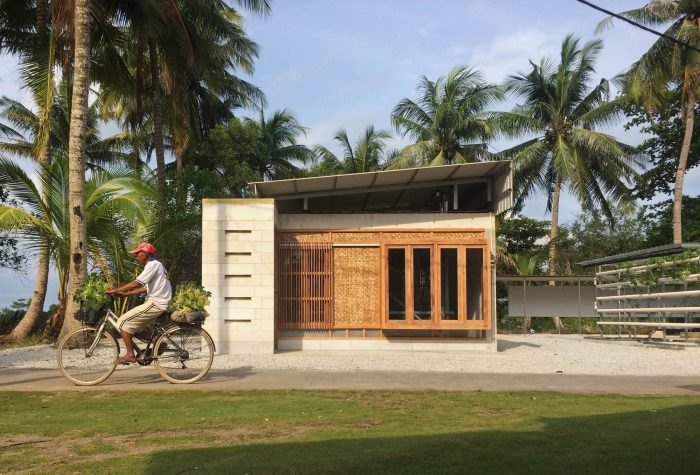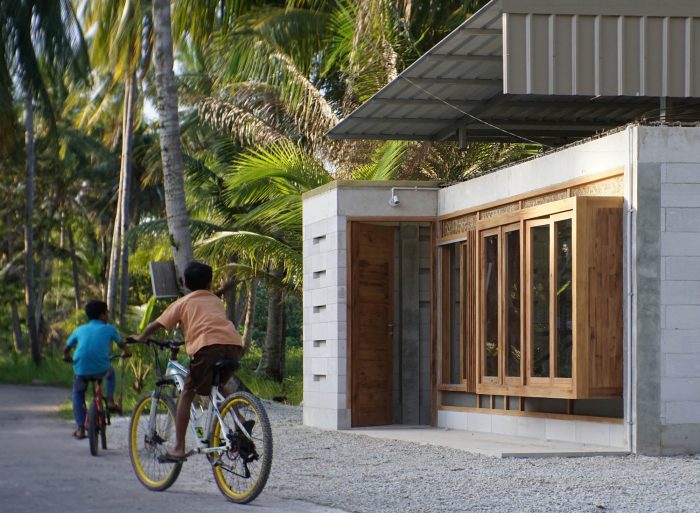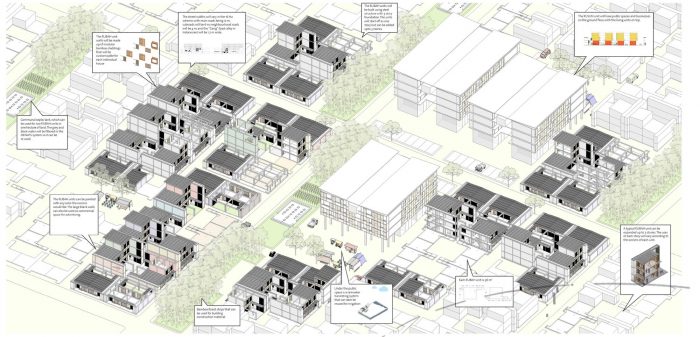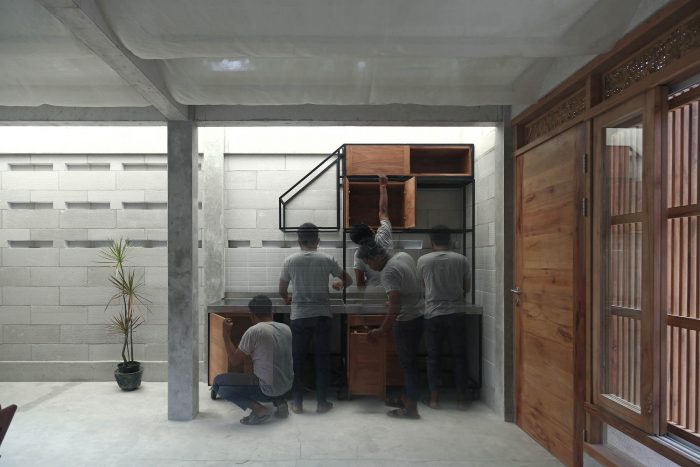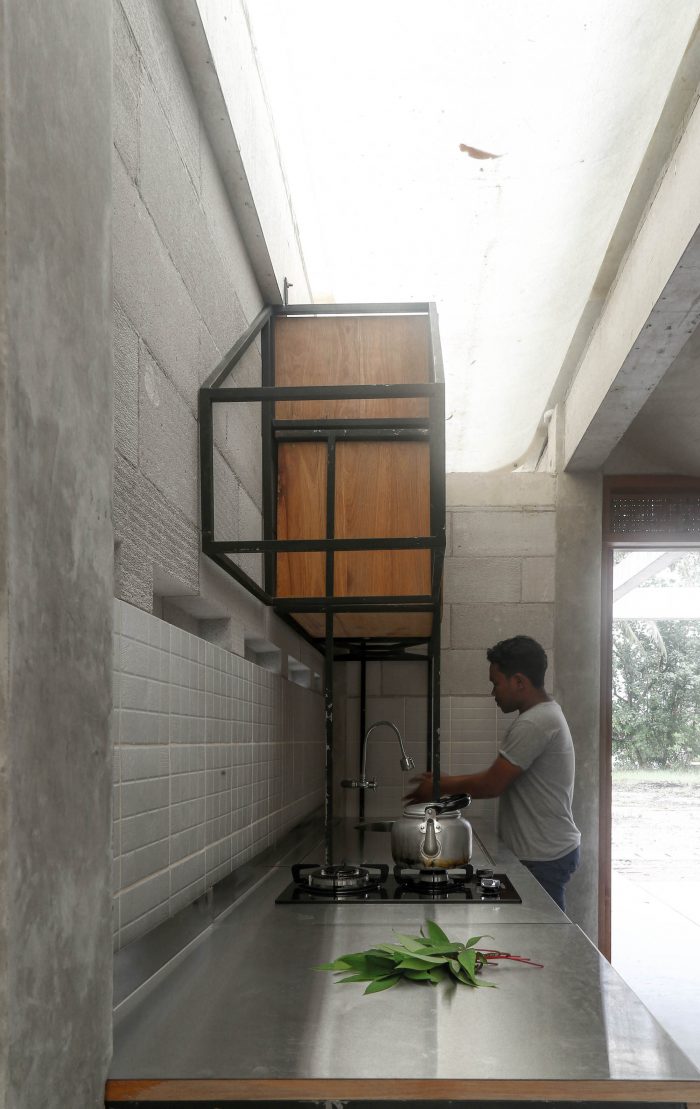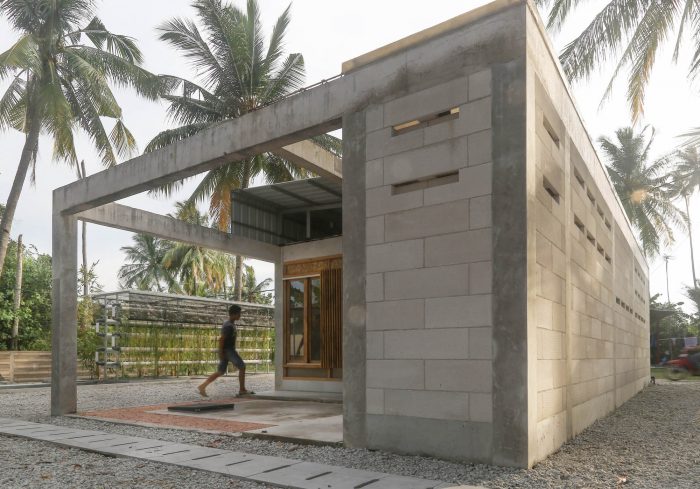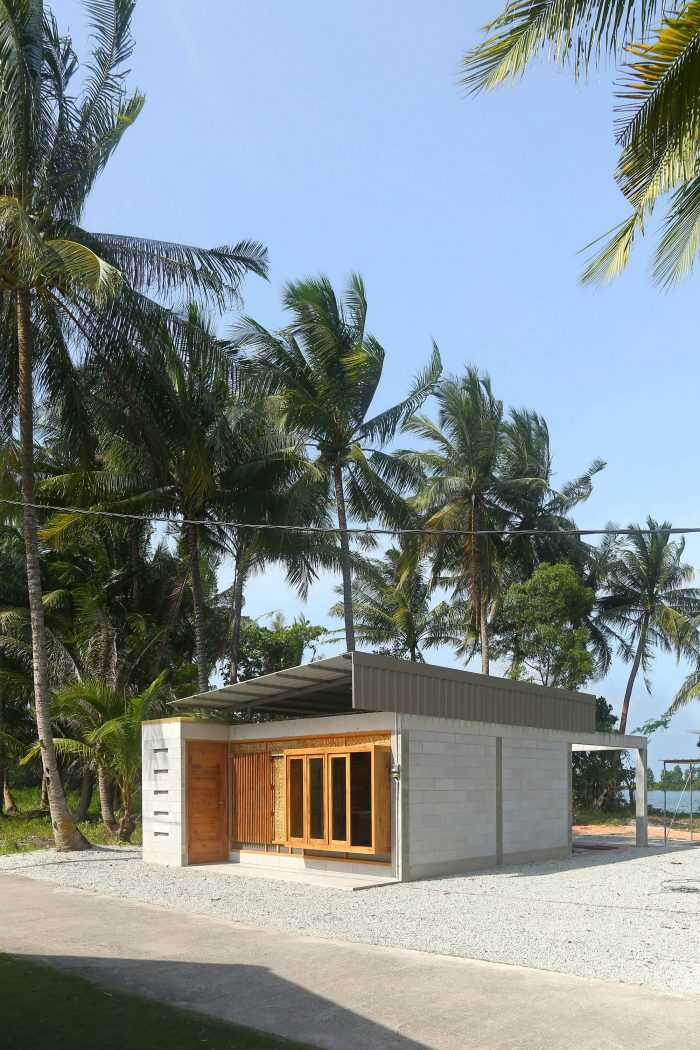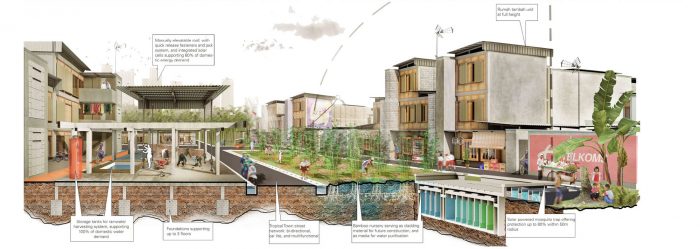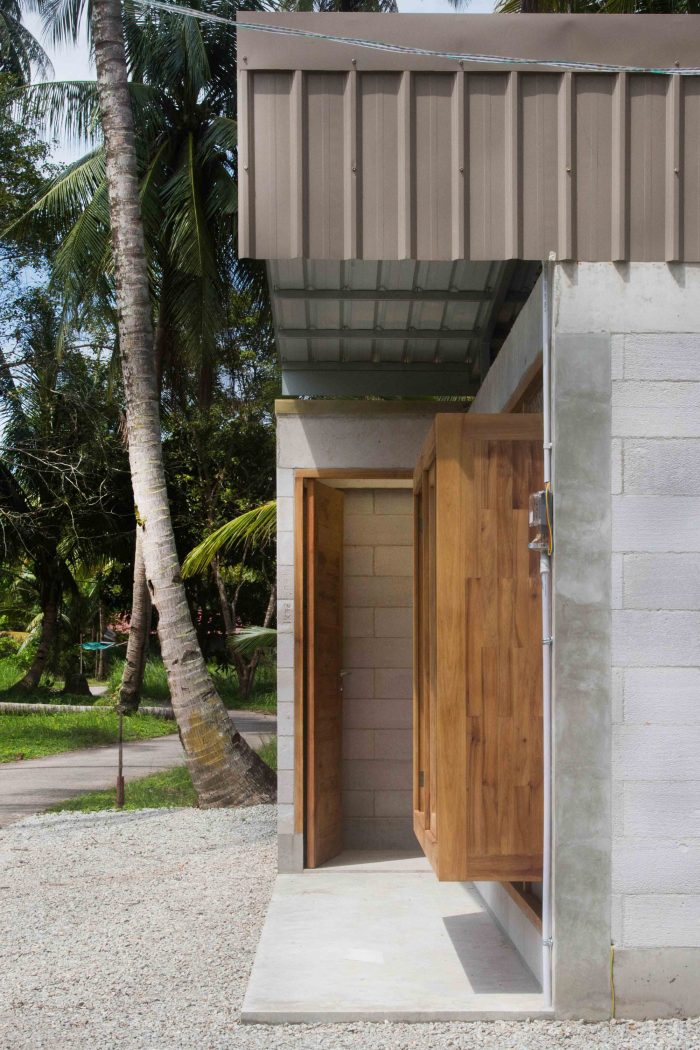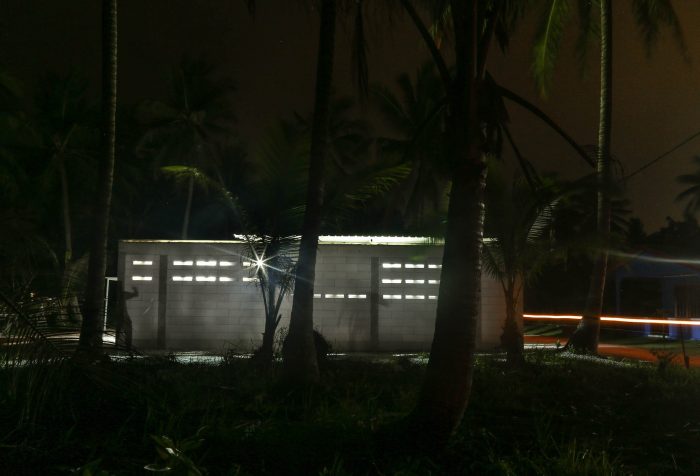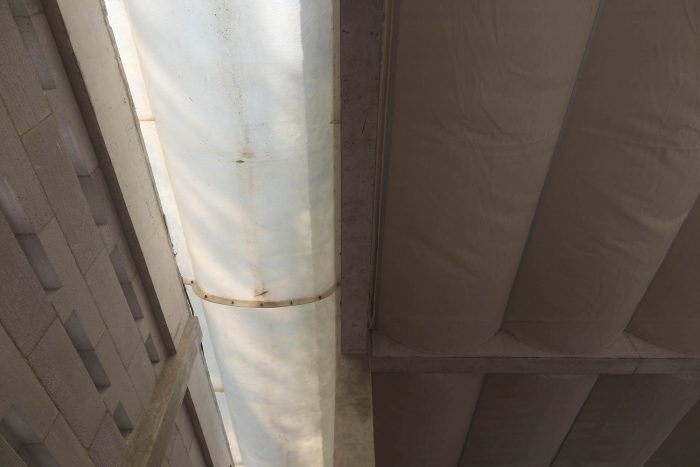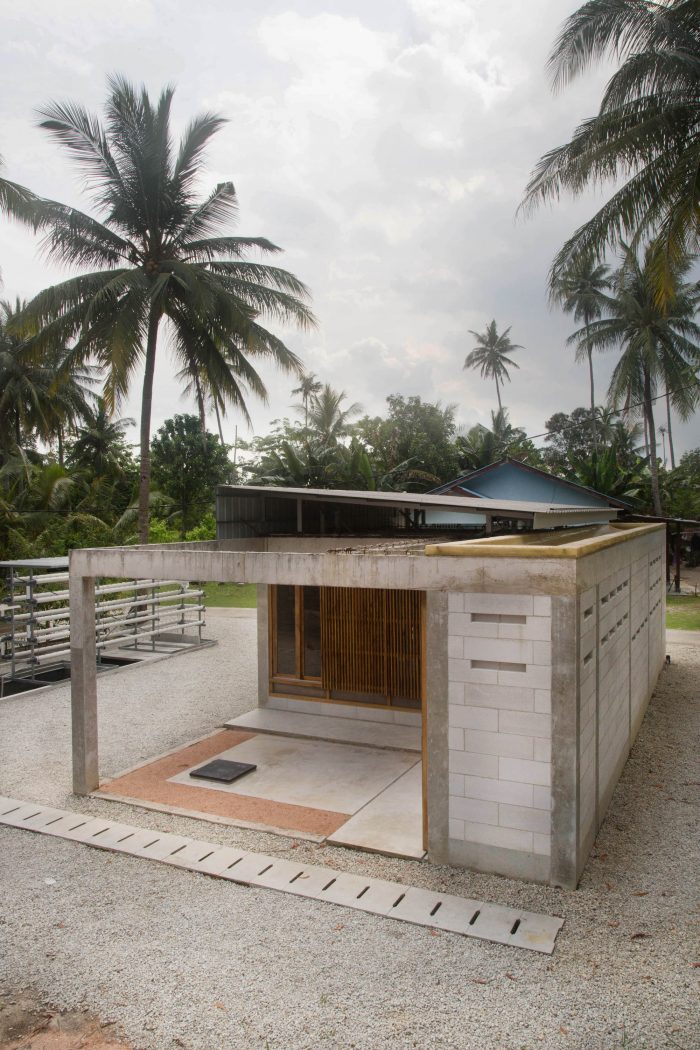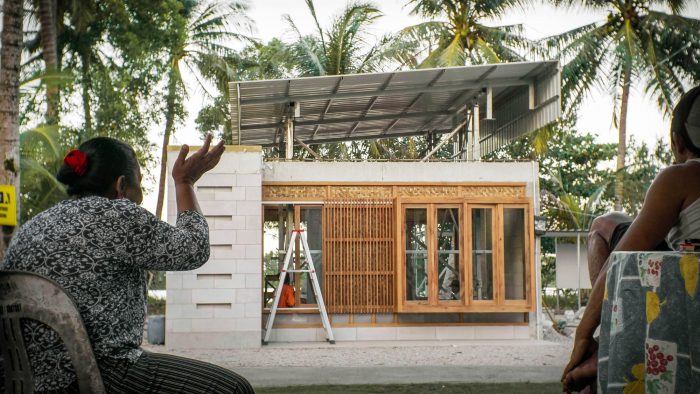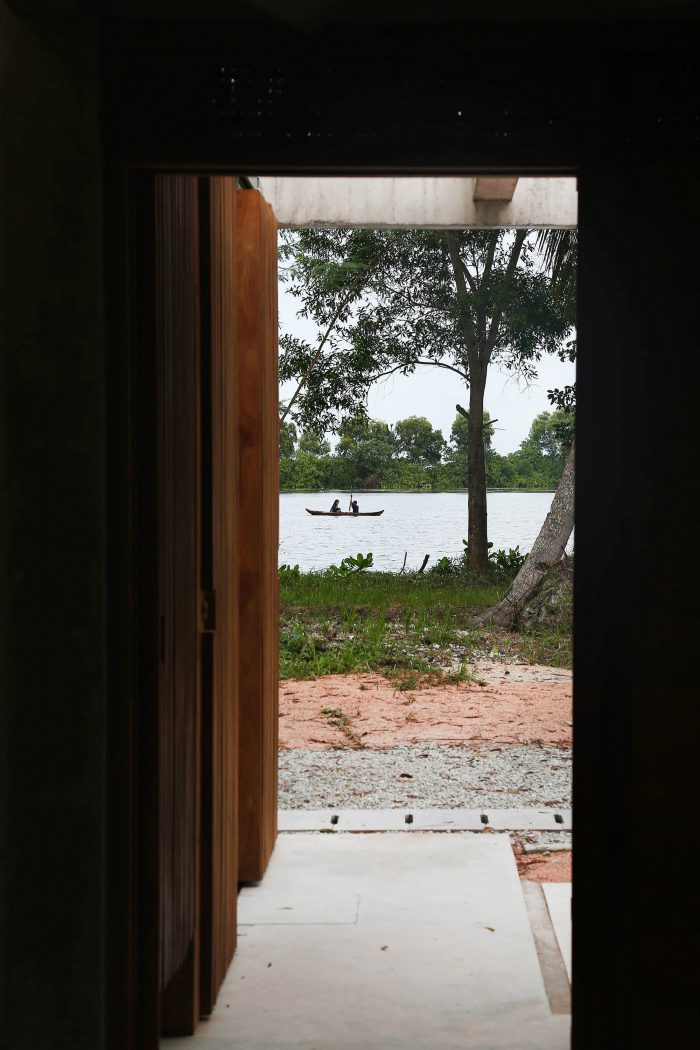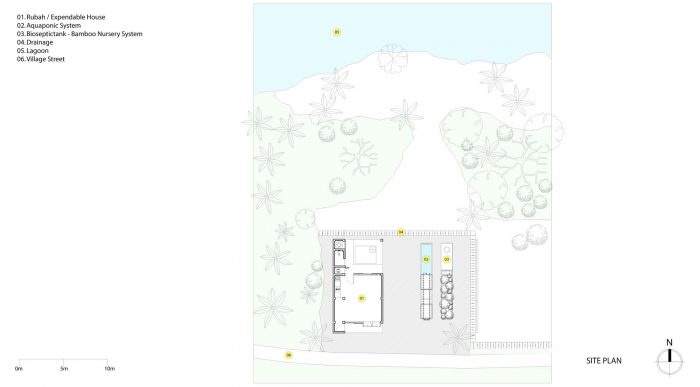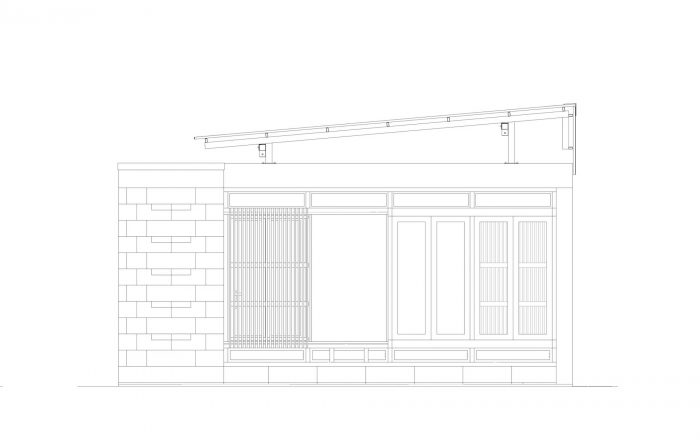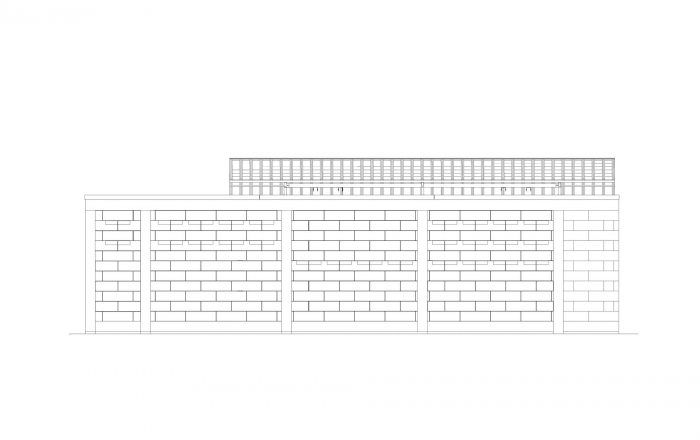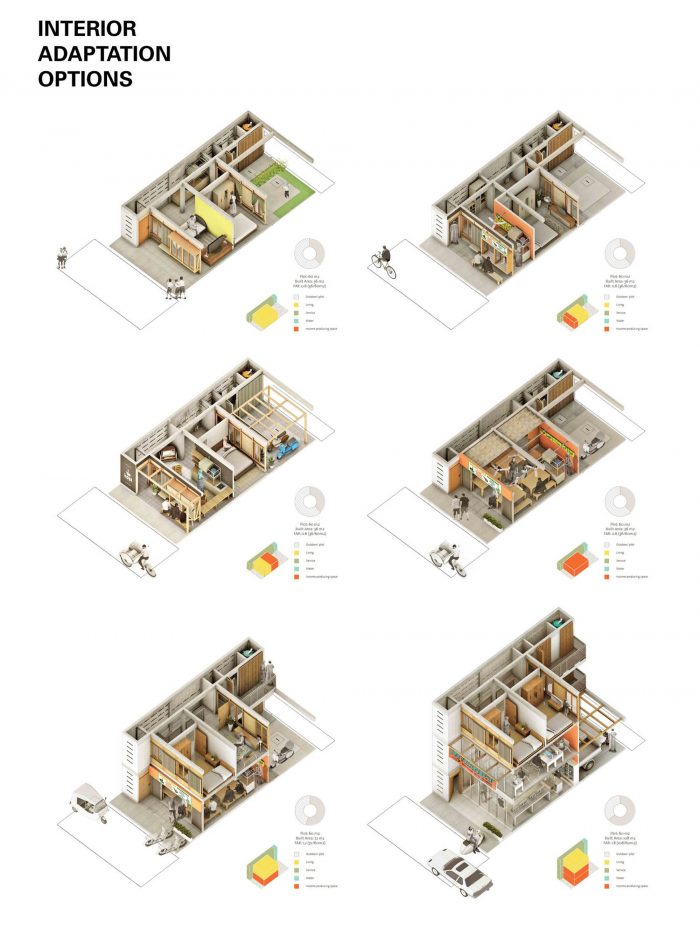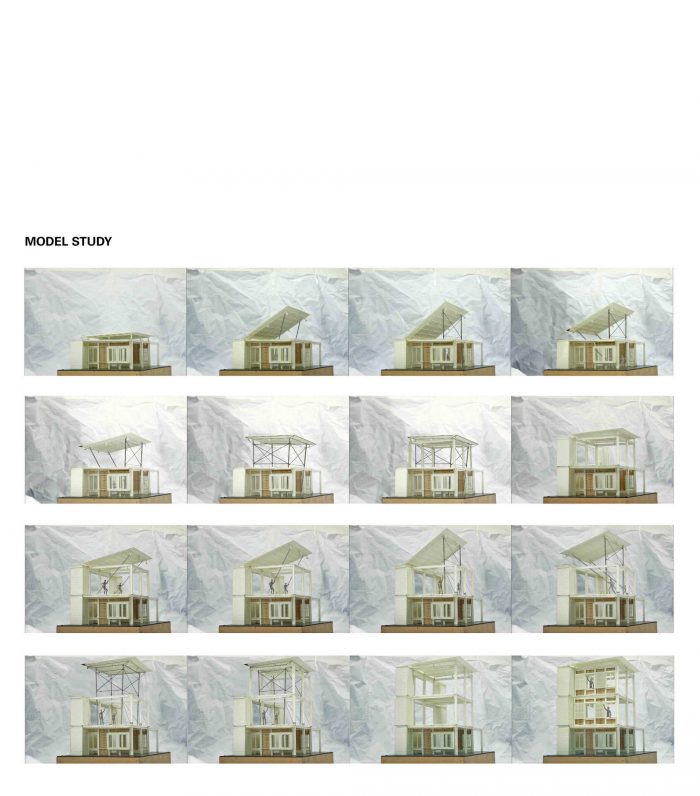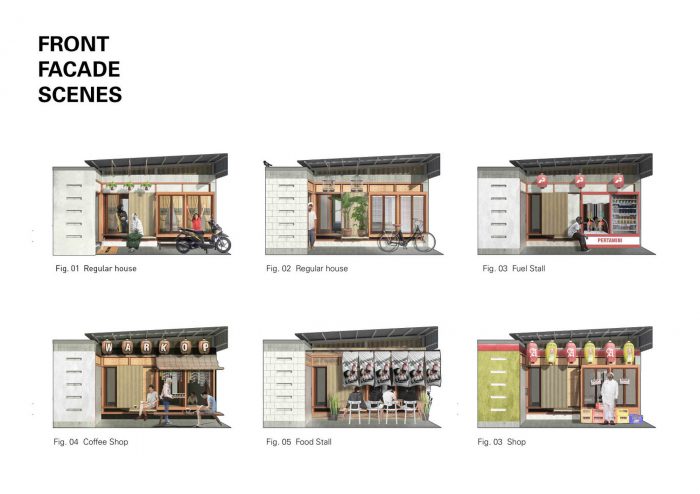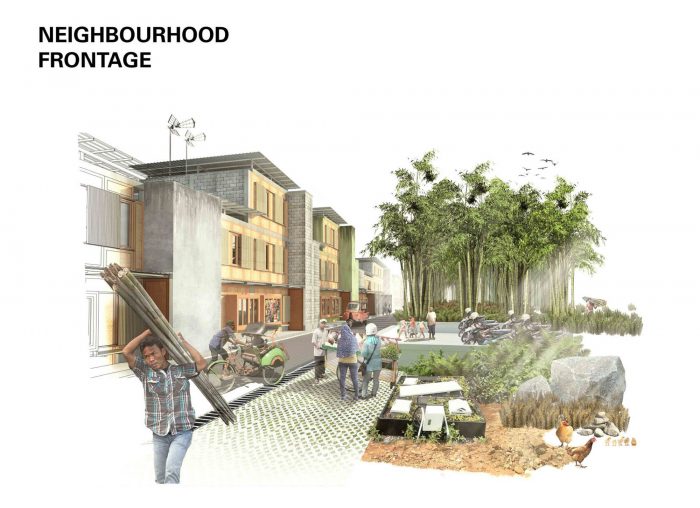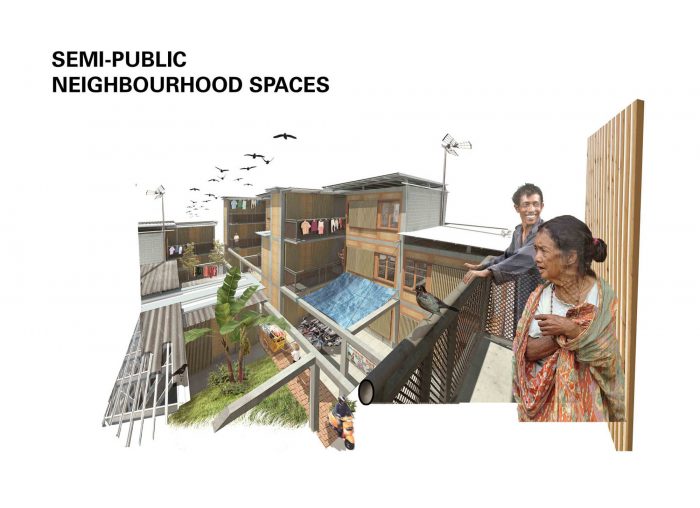这种可扩展的房屋(印尼语为 “rumah tambah”,简称rubah)是为了应对印度尼西亚廖内群岛巴淡岛这样快速发展的城市所面临的挑战而设计的。巴淡岛曾经是一个只有几千人的沉睡渔村,在不到40年的时间里,发展成为一个拥有100多万人口的国际大都市。在新的自由贸易协定和巴淡岛靠近新加坡的优势的推动下,这种显著的增长并没有减少。来自印尼各地的年轻移民搬到那里寻求财富。到2015年,巴淡岛被评为全球发展最快的城市。因此,这座城市面临着重大的规划问题。如何容纳大量的移民?如何提供足够的住房,以及适当的供水和排污系统?如何资助足够的交通基础设施,并提供学校、大学和医院?
The expandable house (‘rumah tambah’ in Bahasa Indonesia, or rubah for short) is designed to be one part of a sustainable response to the challenges of rapidly developing cities like Batam, in Indonesia’s Riau Archipelago. Once a collection of sleepy fishing villages of a few thousand inhabitants, Batam developed to be a cosmopolitan city of over one million people in less than 40 years. This remarkable growth, fueled by a new free trade agreement and Batam’s proximity to Singapore, has not abated. Young migrants from all over Indonesia moved there to seek their fortune. By 2015 Batam was named the fastest growing city in the world. As a consequence, the city was confronted by major planning problems: How to accommodate the influx of migrants? How to provide sufficient housing, and appropriate water and sewage systems? How to fund adequate transport infrastructure, and provide schools, universities and hospitals?
可扩展房屋项目的重点是解决住房的挑战。它通过允许建筑根据居民的资源消耗和支出或新陈代谢的波动模式进行灵活配置来实现。实际上,这意味着要了解家庭创收和支出的模式,水、能源和食物的消耗,以及废物的产生。由于这种新陈代谢通常是不平衡的,而且往往是不稳定的,因此,建筑必须能够成为一个住宅和创收单位,在当地管理自己的废物、水和能源。
The expandable house project focuses on the challenge of housing. It does so by allowing the building to be flexibly configured around the fluctuating patterns of resource consumption and expenditure, or metabolism, of its residents. Practically this means understanding the patterns of household income generation and expenditure, water, energy and food consumption, as well as waste production. As this metabolism is usually uneven and often precarious, it is important that the architecture can be a dwelling and income generating unit, that manages its own waste, water and energy locally.
可扩展房屋的设计围绕以下五个原则进行。
1. 夹层部分。房子提供了一个可以吊装的屋顶,以及可以支持多达三层额外楼层(填充物)的地板和地基(面包)。这种制度允许灵活的融资,即开发商或国家住房机构提供屋顶和地基,而居民根据自己的情况需要和预算允许提供填充物。它还有助于在提供住宅的同时容纳重要的创收功能(商店、咖啡馆、车库、家庭工业)。
The expandable house is designed around the following five principles:
1. Sandwich Section. The house provides a roof that can be hoisted, and floor and foundations (the bread) that can support up to three additional floors (the filling). This system allows flexible financing whereby the developer or state housing agency provides the roof and foundations, while the residents provide infill as their circumstances require and budget allows. It also helps accommodate crucial income generating functions (shop, café, garage, cottage industry) along with dwelling.
2. 住宅密度。房子在垂直维度上鼓励住宅密度化。这支持了住宅和就业共处的好处。它还有助于减少居住区对耕地的占用,以及对昂贵的基础设施(道路、电力和饮用水网络)的需求。
2. Domestic Density. The house encourages domestic densification in the vertical dimension. This supports the benefits of co-location of dwellings and employment. It also helps to reduce the settlement footprint on arable land, and the demand for expensive infrastructures (roads, electrical and potable water networks).
3. 分散式系统。雨水收集和太阳能发电技术、污水和化粪池系统、被动冷却原理与可扩建房屋就地整合,避免了昂贵且往往不可靠的集中式或 “大管道 “的基础设施提供方式。
3. Decentralized Systems. Rainwater harvesting and solar electricity generating technologies, sewage and septic tank systems, and passive cooling principles are integrated locally with the expandable house, avoiding expensive and often unreliable centralized, or ‘big pipe’, approaches to infrastructure provision.
4. 生产性景观。可扩展房屋就地整合了粮食和建材生产能力。通过将竹林和厨房花园纳入房屋的规划逻辑来实现,有助于进一步丰富可拓展房屋的资源基础。
4. Productive Landscapes. The expandable house integrates food and building material production capacity locally. This is achieved by integrating bamboo plantations and kitchen gardens into the planning logic of the house, and helps further diversify the resource base of the expandable house.
5. 种子配套。可扩展房屋被设计成一个种子包,包含技术、材料策略和规划准则,可以根据当地的社会、文化和环境条件以不同的方式发展。我们打算从共同的种子包中生长出多样化的热带城镇。
5. Seed Package. The expandable house is designed as a seed package, containing technologies, material strategies and planning guidelines that can develop in different ways depending on local social, cultural and environmental conditions. We intend that diverse tropical towns will grow from the common seed package.
建筑师:Urban Rural Systems
面积:36 m²
年份:2018年
摄影:Dio Guna Putra
厂家:Hebel, Fibreglass
城市: 巴塔姆
国家:印度尼西亚
Architects: Urban Rural Systems
Area: 36 m²
Year: 2018
Photographs: Dio Guna Putra
Manufacturers: Hebel, Fibreglass
City: BATAM
Country: Indonesia

